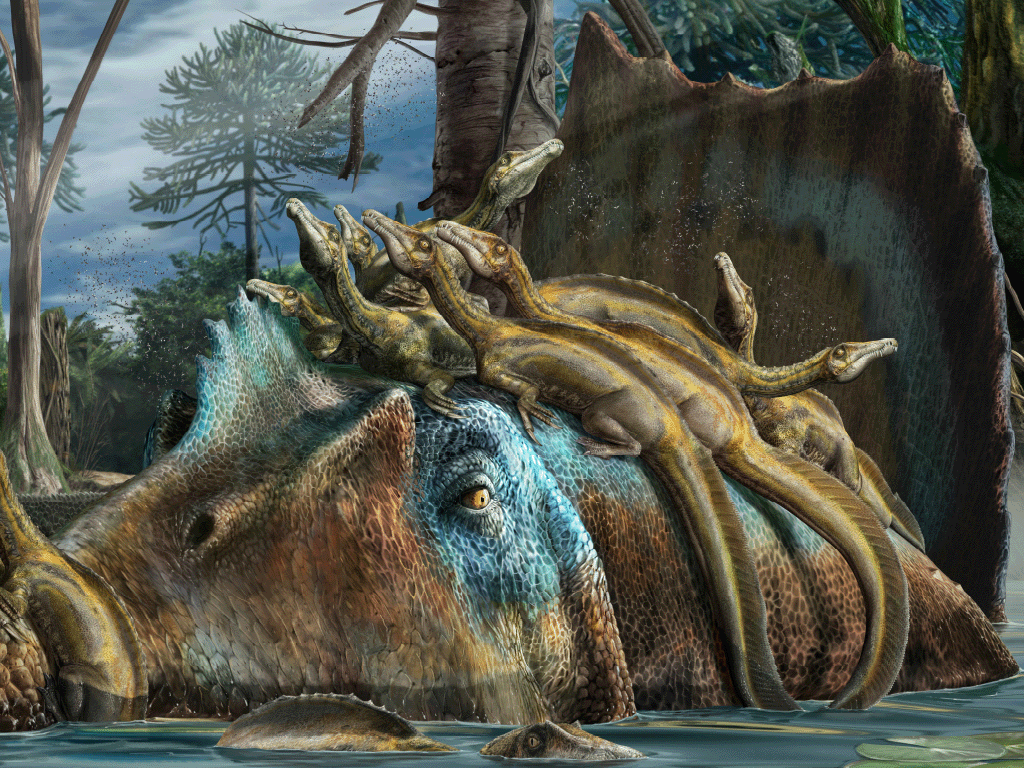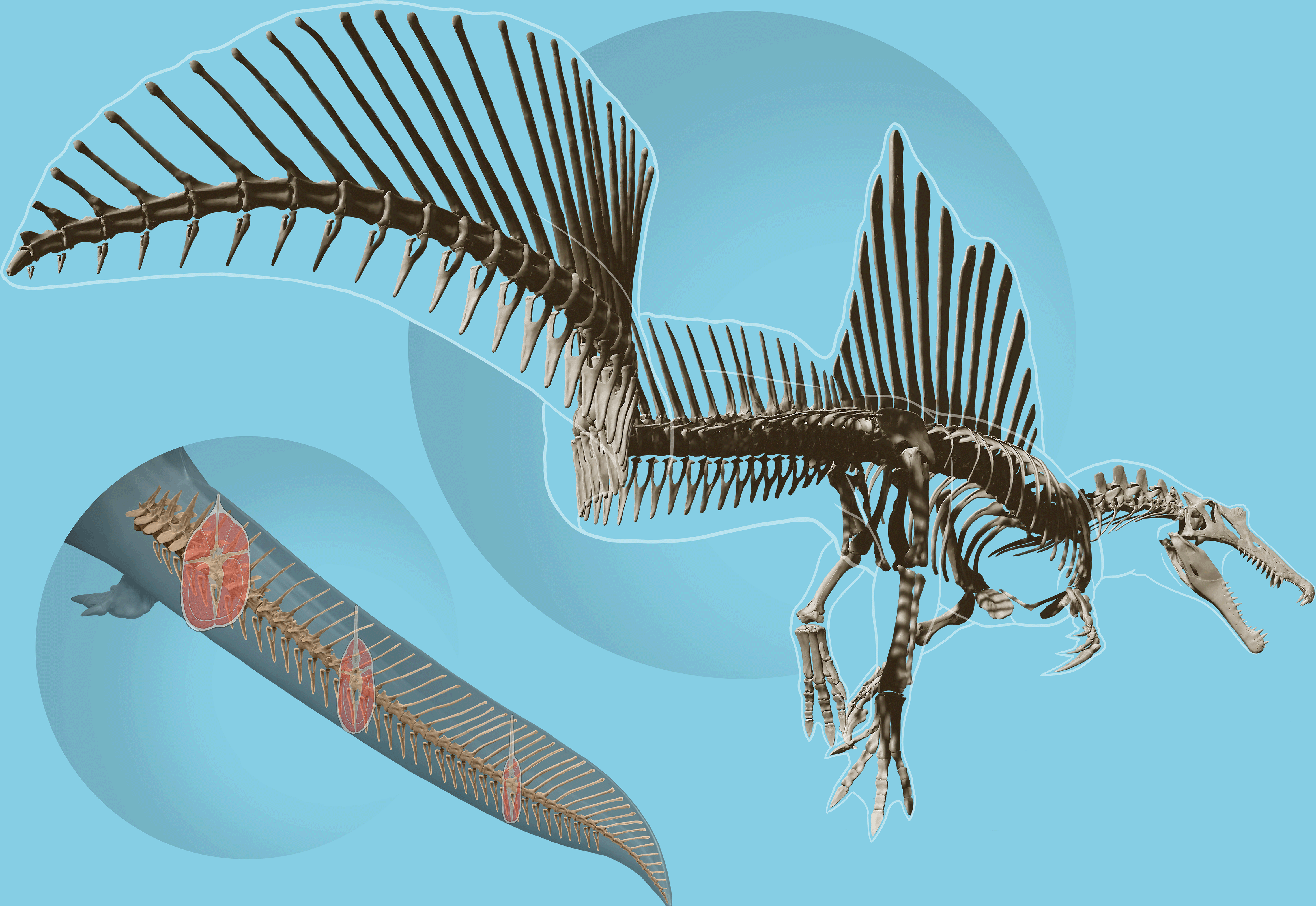
Spinosaurus - A Munich Discovery
August 10, 2024
The Munich Show - Mineralientage München is presenting an extraordinary special exhibition this year, making its European debut: the Spinosaurus aegyptiacus, one of the most fascinating dinosaurs of the Cretaceous period, is being showcased in an entirely new light thanks to the latest scientific discoveries. This exhibition not only provides a unique look at this gigantic theropod but also highlights significant discoveries that have revolutionized our understanding of this impressive creature.
A highlight of the exhibition is a life-size model of the Spinosaurus, created based on the most recent research findings. This model is the first of its kind and vividly illustrates the aquatic characteristics of the Spinosaurus, which have become increasingly apparent in recent years. Unlike many of its theropod relatives, who were considered purely land-dwelling, the Spinosaurus was a true river inhabitant, adapted to life in the water.
One of the most groundbreaking discoveries about the Spinosaurus concerns its bone structure. Scientists have discovered that the bones of this dinosaur were surprisingly dense compared to other dinosaurs. This high bone density, especially in the leg bones, indicates a lifestyle heavily reliant on the ability to control buoyancy in water. In contrast to the light, hollow bones of most land dinosaurs, the Spinosaurus’ bones are nearly solid, suggesting that this animal was not just a wader, as previously often assumed, but a highly adapted aquatic predator.
Another spectacular discovery highlighted in this exhibition is the nearly complete tail of the Spinosaurus, found between 2015 and 2019 in the Sahara. This discovery revealed that the Spinosaurus' tail had a paddle-like structure, propelling it through water—similar to the tails of modern crocodiles or newts. The muscle distribution and shape of the tail further emphasize this aquatic adaptation, positioning the Spinosaurus as the first known dinosaur to be so intensively adapted to life in water.
The skull of the Spinosaurus also tells a fascinating story. Its long, narrow jaws, strongly resembling those of crocodiles, were perfectly suited for catching fish. The conical teeth of the Spinosaurus, ideal for grasping slippery prey, and the nostrils positioned far back on the skull allowed the animal to hunt and breathe underwater, with most of its head submerged.
This impressive exhibition also brings some of the original bones to Munich, upon which these new insights are based. These fossils offer a direct look at the evidence that led scientists to their conclusions, making this special exhibition a must-see for dinosaur enthusiasts and science lovers alike.
The presentation of the Spinosaurus at the Munich Show also holds special historical significance. Over a century ago, the German paleontologist Ernst Stromer von Reichenbach discovered the first fossils of a Spinosaurus in the Bahariya Oasis in Egypt. He brought these finds to Munich, where they were displayed in the city’s Paleontological Museum. Unfortunately, these valuable fossils were destroyed during World War II, resulting in the loss of an important piece of Spinosaurus history.
With this current special exhibition, an important circle is now being closed. Over a century after Stromer’s discovery, the Spinosaurus returns to Munich—this time, however, based on the latest scientific knowledge and with an even deeper understanding of its way of life. The story of the Spinosaurus, once initiated by Stromer, is thus impressively continued and completed.
Following its successful appearance in Hong Kong as part of the renowned "BIG Eight Show," this extraordinary special exhibition is now coming to Europe and is sure to amaze visitors at the Munich Show. The presentation of the Spinosaurus in Munich not only offers a profound insight into the life of this extraordinary dinosaur but also demonstrates how modern science challenges old ideas and continuously expands our understanding of natural history. This return of the Spinosaurus to Munich is a tribute to Ernst Stromer and symbolizes the ongoing progress in paleontology. Once again, the Munich Show provides a platform where knowledge, research, and fascination with nature come together in a unique way.

